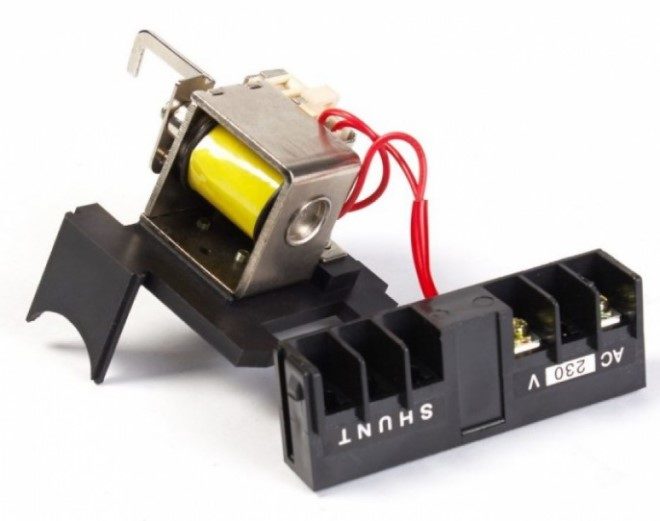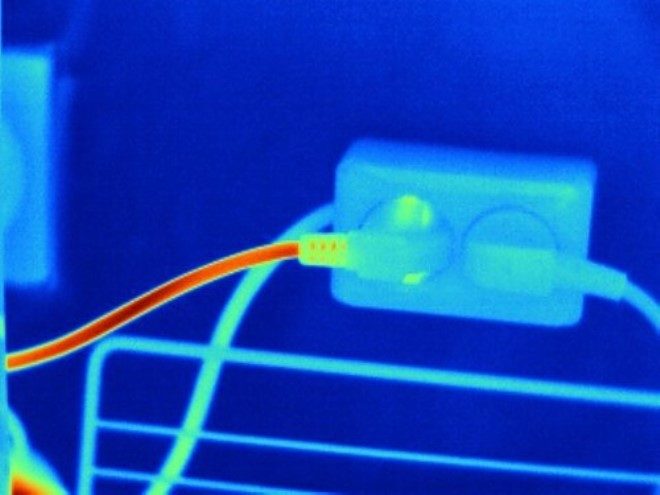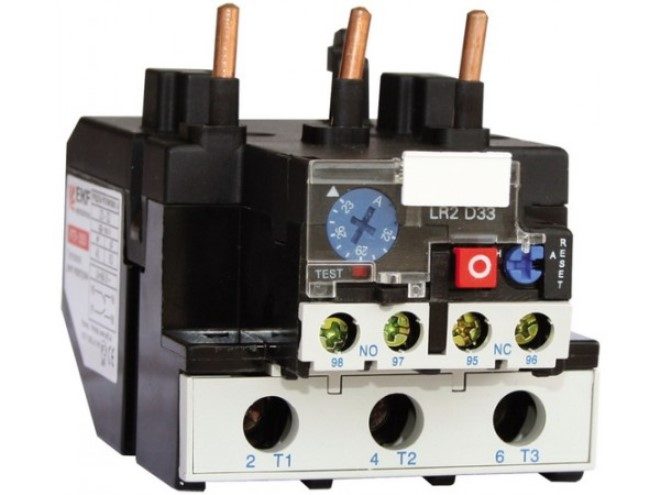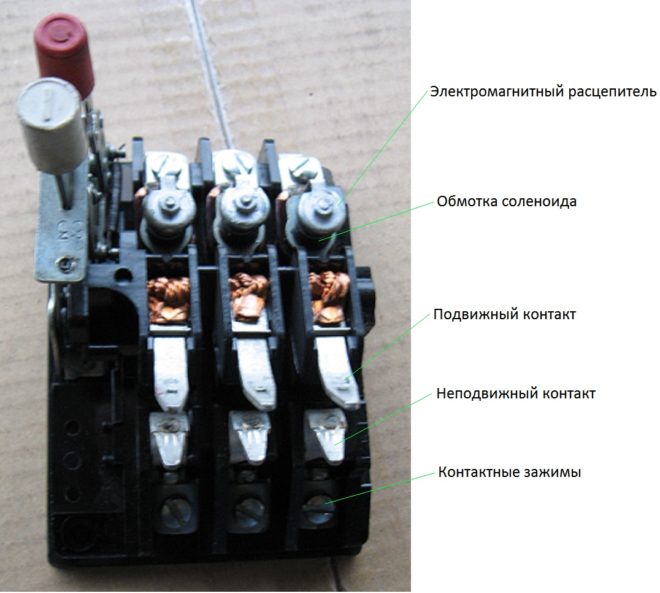Shunt trip circuit breaker - what are its advantages?

The shunt trip is a supplement to the mains protection device. It is mechanically linked to a circuit breaker. The shunt release performs the function of breaking the circuit when factors are detected that can lead to damage to the line and the devices included in it. These include an increase in current strength above the limit that a cable can withstand, an electric current breakdown to earth or the case of a device included in the circuit, as well as a short circuit. This material will help you understand what trip units of circuit breakers are, what types of this device are and what is the principle of operation of each of them. We will also show you how to check the functionality of these elements.
Content
Circuit breaker with shunt release
Shunt trip, as mentioned, is an additional element of the circuit protection device. It allows you to turn off AB at a distance when voltage is applied to its coil. To return it to its original state, press the button on the device that says "Return".

The trip units of this type of circuit breaker can be used in single-phase and three-phase networks.
The shunt trip is most often used in electrical circuits and automatic switchboards of large objects. Power supply control in these cases, as a rule, is carried out from the operator's panel.
An example of a shunt release in the video:
What causes an independent trip element to trip?
The shunt trip can trip for various reasons. We will list the most common ones:
- An excessive decrease or, on the contrary, an increase in tension.
- Change of set parameters or state of electric current.
- Violation of the function of circuit breakers, malfunctioning for an unknown reason.
In addition to independent trip devices, there are similar elements that make up the circuit breakers. Built-in trip units of circuit breakers are divided into thermal and electromagnetic releases. These devices also help protect the line from overload and short circuit. Let's consider them in more detail.
Thermal release of a circuit breaker
The main element of this device is a bimetallic plate. In its manufacture, two metals are used with different coefficients of thermal expansion.

When pressed together, they expand to varying degrees when heated, causing the plate to bend. If the current does not normalize for a long time, then upon reaching a certain temperature, the plate touches the AB contacts, interrupting the circuit and de-energizing the wiring.
The main reason for the excessive heating of the bimetallic plate, due to which the thermal release is triggered, is too high load on a certain section of the line protected by the machine.
For example, the cross-section of the AB output cable going into the room is 1 sq. mm. It can be calculated that it is capable of withstanding the connection of devices with a total power of up to 3.5 kW, while the strength of the current passing in the line should not exceed 16A.Thus, you can safely connect a TV and several lighting devices to this group.
If the owner of the house decides to add a washing machine, an electric fireplace and a vacuum cleaner to the sockets of this room, then the total power will become much higher than what the cable can withstand. As a result, the current flowing through the line will increase and the conductor will begin to heat up.

Overheating of the cable can cause the insulation layer to melt and catch fire.
To prevent this from happening, the thermal release is activated. Its bimetallic plate heats up together with the metal of the wire, and after a while, bending, turns off the power to the group. When it cools down, the protective device can be turned on again manually by first unplugging the power cords of the devices that caused the overload from the socket. If this is not done, after a while the machine will shut down again.
An example of using a release in fire protection in the video:
It is important that the AB rating corresponds to the cable cross-section. If it is less than necessary, then the operation will occur even under normal load, and if it is more, then the thermal release will not react to a dangerous excess current, and as a result, the wiring will burn out.
In order to protect electric motors from prolonged overloads and phase loss, thermal trip relays can also be installed on these units. They are several bimetallic plates, each of which is responsible for a separate phase of the power unit.

Circuit breaker for mains protection with electromagnetic release
Having figured out how an automatic machine with a thermal release works, let's move on to the next question. The protective device, the analysis of which we have just carried out, does not work immediately (it takes at least a second), therefore it is not able to effectively protect the circuit from short-circuit overcurrents. To solve this problem, an electromagnetic release is additionally installed in AB.
The releases of electromagnetic type circuit breakers include an inductor (solenoid) and a core. When the circuit is operating normally, the flow of electrons passing through the solenoid forms a weak magnetic field that is unable to influence the function of the network. When a short circuit occurs, an instantaneous increase in the current strength occurs tens of times, and the power of the magnetic field increases in proportion to it. Under its influence, the ferromagnetic core instantly shifts to the side, affecting the shutdown mechanism.
Since the process of strengthening the magnetic field during a short circuit occurs in a fraction of a second, the electromagnetic release under its influence is triggered instantly, turning off the mains power. This avoids serious consequences associated with short-circuit overcurrents.

Functional check of releases
Quite often, amateur electricians are interested in whether it is possible to independently check the serviceability of the circuit breaker releases. It should be said that it is impossible to carry out such testing on its own, and if a novice installer is engaged in it, then an experienced specialist should supervise the work. Here are step-by-step instructions for performing this procedure:
- First of all, the surface of the box should be visually inspected to ensure the integrity of the body.
- Then you need to click the switch lever several times. It should be easily installed in both on and off position.
- After that, the device is loaded. This is the name of checking the quality of equipment in adverse conditions. This stage provides for the availability of specialized equipment, and a qualified electrician must be present during its implementation.During testing, the time that elapses from the moment the current increases until the release is tripped is recorded.

- Finally, a similar test is performed on the device from which the casing has been removed.
- During the test for the operation of the thermal release, the time required to turn off the device under the influence of an electric current of increased strength is recorded.
Checking the serviceability of protective devices in accordance with the requirements of the PUE is carried out only in overalls. As mentioned above, this procedure should be supervised by an experienced specialist.
In the video, the process of installing a shunt release in a circuit breaker:
Conclusion
In this article, we figured out the topic of trip devices, talked about what they are and how they work, as well as trip units built into the circuit breaker. Now you know how the various types of this equipment work, and what function each of them performs.




